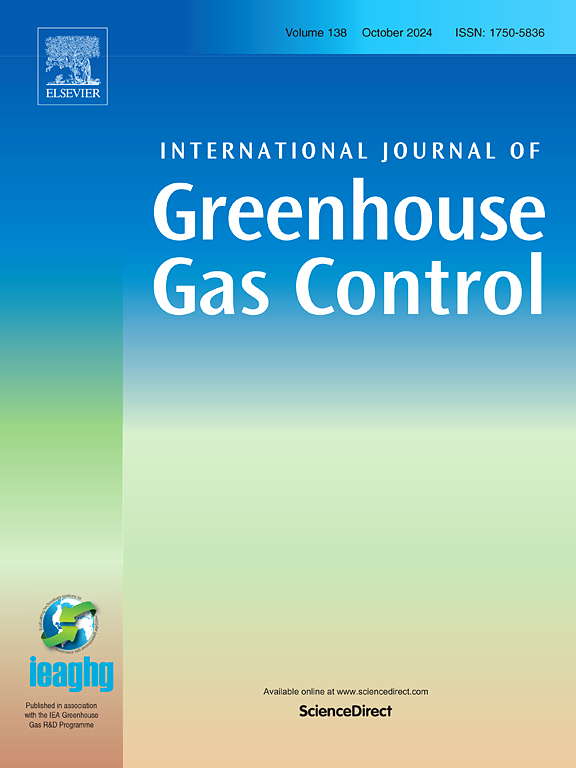Beta-Amino Carboxylate (BAC) non-aqueous physical solvents for enhanced CO2 separations in pre-combustion carbon capture, industrial CO2 capture, and biogas upgrading processes
IF 5.2
3区 工程技术
Q2 ENERGY & FUELS
International Journal of Greenhouse Gas Control
Pub Date : 2025-07-14
DOI:10.1016/j.ijggc.2025.104432
引用次数: 0
Abstract
Novel beta-amino carboxylate (BAC) solvents have been synthesized and tested to efficiently capture carbon dioxide (CO2) from process gas streams with CO2 partial pressure intermediate between pre-combustion and post-combustion capture. The BAC solvents have molecular structures characterized by alkyl-substituted amides or esters containing a secondary amine functional group on the second carbon from the carbonyl carbon (referred to as the beta “β” carbon). The ester or amide functional group combined with optimal steric crowding around the amine nitrogen by proximate alkyl groups are tailored to modify the strength of CO2 binding in the solvent. The solvents possess high CO2 solubilities and high gas selectivity including good CO2/H2O selectivity and can be utilized for CO2 absorption over a range of partial pressures. Due to low volatility, many of the solvents can be operated at or above ambient temperature which eliminates solvent chilling and allows regeneration using low grade waste heat. These novel solvents offer an opportunity for efficient carbon capture for a range of applications including biogas upgrading, hydrogen production, and pre-combustion carbon capture.
β -氨基羧酸酯(BAC)非水物理溶剂,用于增强燃烧前碳捕获,工业二氧化碳捕获和沼气升级过程中的二氧化碳分离
新型β -氨基羧酸酯(BAC)溶剂被合成并进行了测试,以有效地捕获二氧化碳(CO2)从工艺气体流中,二氧化碳分压介于燃烧前和燃烧后捕获之间。BAC溶剂的分子结构以烷基取代的酰胺或在羰基碳(称为β“β”碳)的第二个碳上含有仲胺官能团的酯为特征。酯或酰胺官能团与邻烷基胺氮周围的最佳空间拥挤相结合,以改变溶剂中CO2的结合强度。该溶剂具有高的CO2溶解度和高的气体选择性,包括良好的CO2/H2O选择性,可以在一定的分压范围内吸收CO2。由于挥发性低,许多溶剂可以在环境温度下或高于环境温度下运行,从而消除了溶剂冷却,并允许使用低品位废热进行再生。这些新型溶剂为一系列应用提供了高效碳捕获的机会,包括沼气升级、制氢和燃烧前碳捕获。
本文章由计算机程序翻译,如有差异,请以英文原文为准。
求助全文
约1分钟内获得全文
求助全文
来源期刊
CiteScore
9.20
自引率
10.30%
发文量
199
审稿时长
4.8 months
期刊介绍:
The International Journal of Greenhouse Gas Control is a peer reviewed journal focusing on scientific and engineering developments in greenhouse gas control through capture and storage at large stationary emitters in the power sector and in other major resource, manufacturing and production industries. The Journal covers all greenhouse gas emissions within the power and industrial sectors, and comprises both technical and non-technical related literature in one volume. Original research, review and comments papers are included.

 求助内容:
求助内容: 应助结果提醒方式:
应助结果提醒方式:


